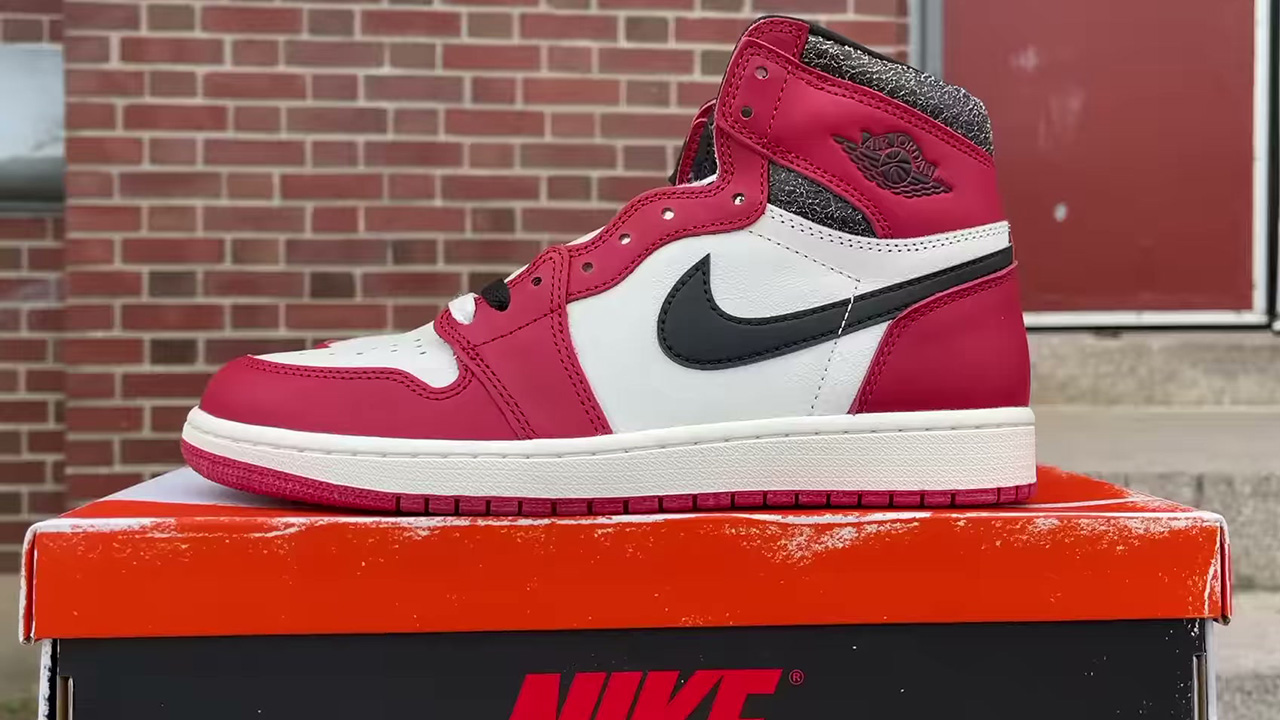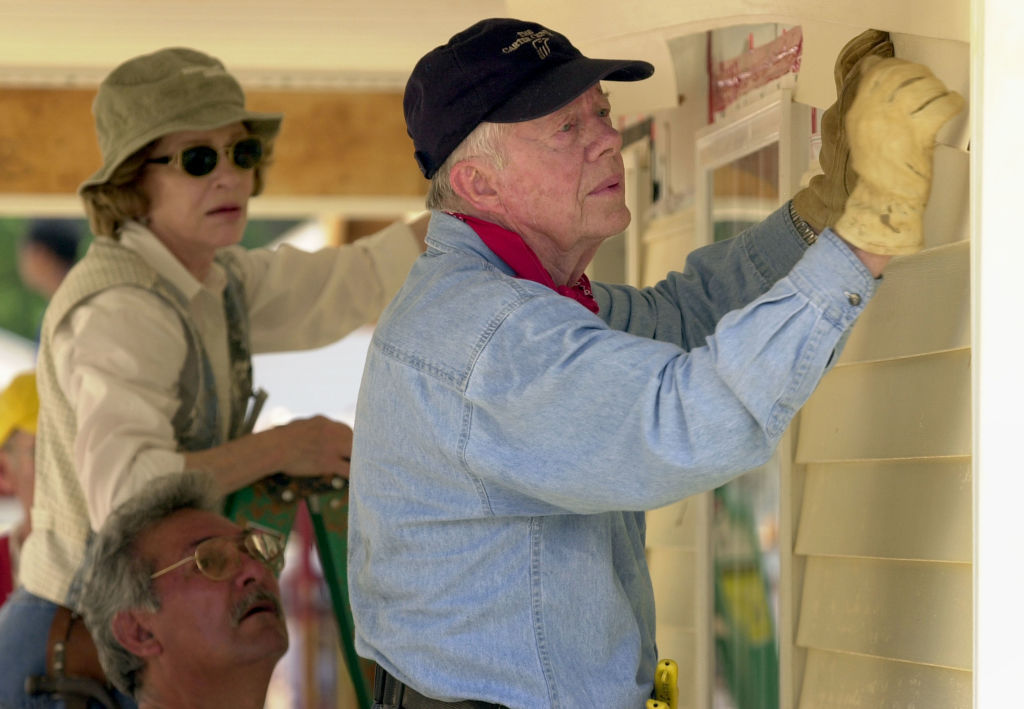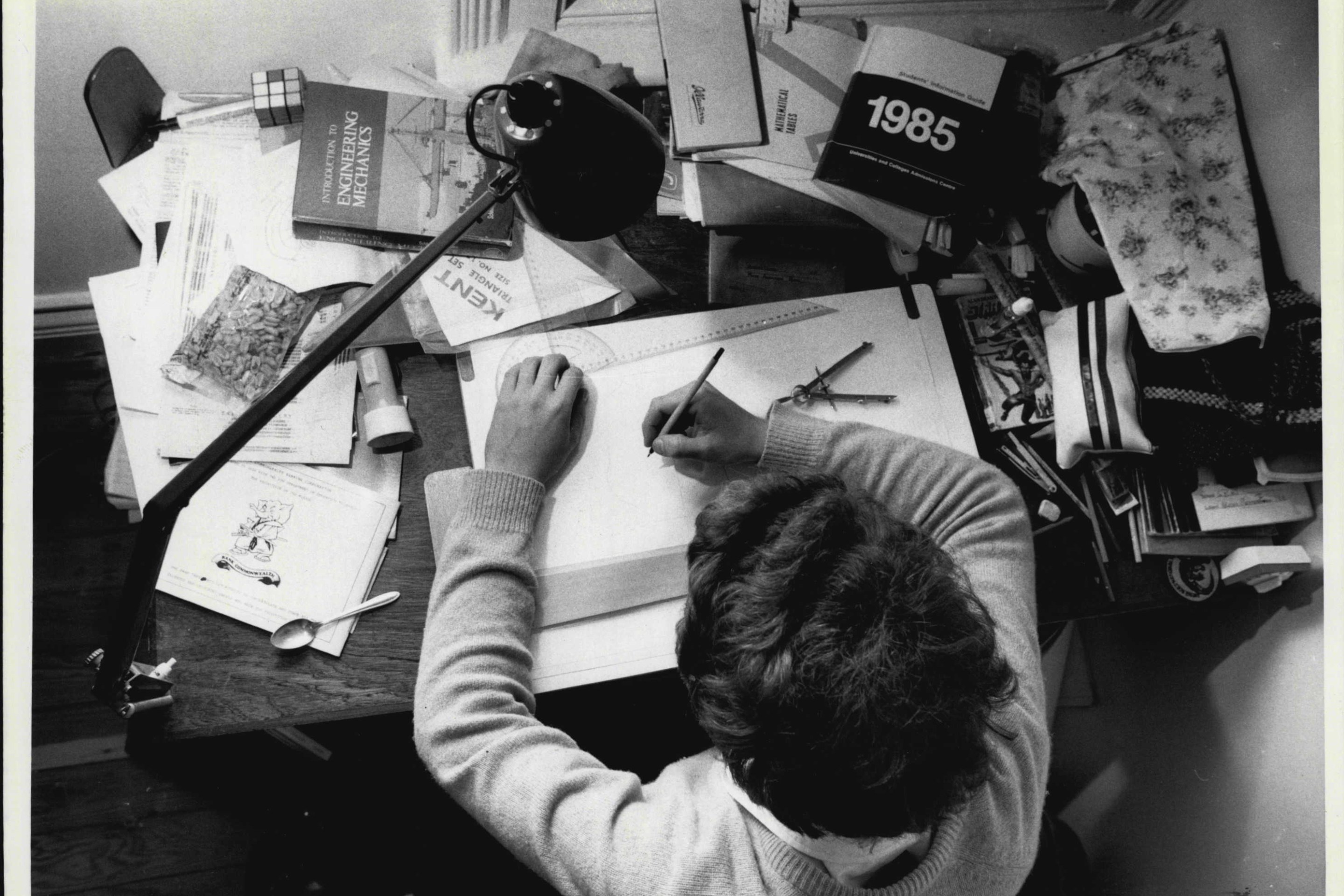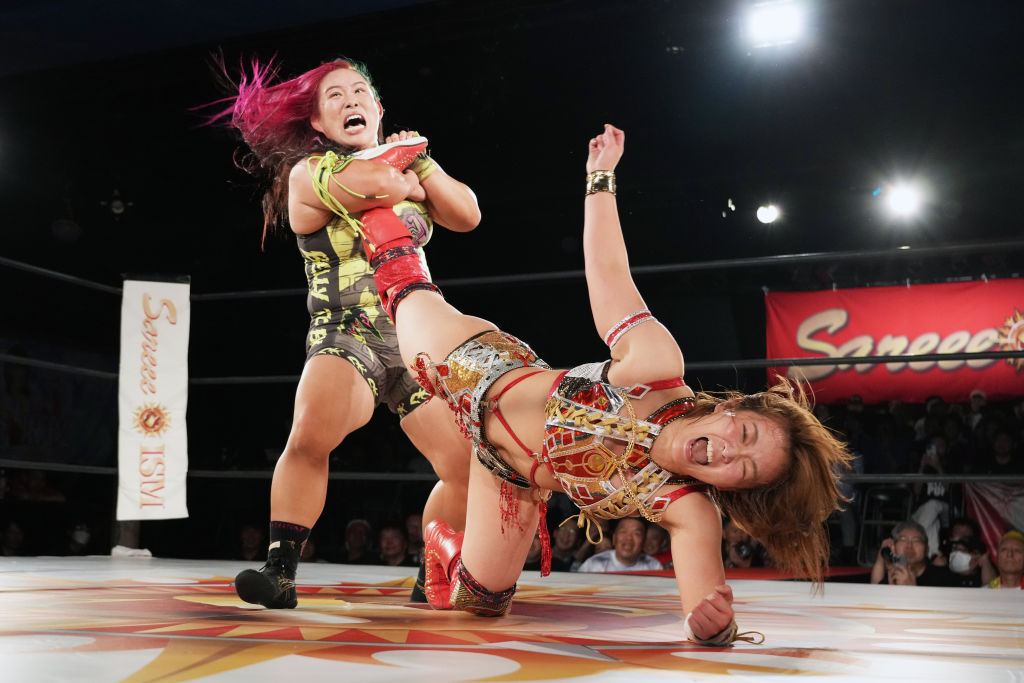Few kicks are as iconic to sneakerheads as the Nike Air Jordan 1. That shoe, designed by Peter Moore and originally released in 1985, is not particularly special on its own; it's cool, but it looks like a lot of other Nike shoes Moore and others designed in the mid-1980s. As it happened, though, this sneaker was Michael Jordan’s, and so revolutionized both basketball sneakers and the marketing around them. For what it's worth, I think it’s a great-looking shoe.
Nike does not just produce the most popular Jordan 1s to meet demand. Recently they have released dozens of Jordan 1s per year, in varying styles, price points, and availability. They come as high tops, low tops, a “mid” cut that’s not all that different than the high but is somehow much less cool, “85” versions that are truer to the original design, waterproof GORE-TEX ones, altered versions for golf or skateboarding, a cheaper “comfort" variety, a cheaper “AJKO” model that mimics knockoff Jordans, and some stupid-looking Jordan 1s with bags on them. I might be forgetting some. There are a lot.
These sneakers all are varying levels of cool due to their cuts and colorways and design collaborators. Some sneakers can be picked up for retail. You might find mids sitting at a store that carries Nike products. Colorways that seem to have been inspired by Ronald McDonald might not sell out. The (deep breath) Jordan 1 High OG SP Fragment x Travis Scott was a limited sneaker with hyped collaborators; it was incredibly hard to get and now resells for more than two grand.
Besides collabs with rappers like Scott or designers like Virgil Abloh, the most sought-after Jordans are ones from the original colorways—styles that match the original color releases from the 1980s. One of the most beloved pairs—either No. 1 or No. 2, alongside the black/red “bred” colorway—is the Chicago. The Chicago 1s are mostly red and white with some black accenting. They are the Bulls’ colors. They look great on feet. And since Nike does a good job of managing hype and product stock, the Chicago 1s releasing later this year will probably not be impossible to obtain. Resale won’t be as high as the Travis Fragment 1s; they will be easier to buy at retail. They’re easy to flip online or at a consignment shop. People will also want these shoes just to resell them. It is going to be a big sneaker buying day.
Jordan Brand is separate from Nike and has been for a while; it was first announced in 1997. But the brands operate similarly when it comes to hyped products. Nike and Jordan rarely announce new products themselves, at first, with word coming to the public via dribs and drabs. I generally follow the leaks of Kenneth Myers Jr, who goes by @mr_unloved1s on Instagram. His account is an exhaustive museum of fascinating Jordan 1 history, and he generally has his info right. Earlier this year, he announced a new sneaker, one that would be a little different. It wouldn’t just be a Chicago Jordan 1, he said. It would be “reimagined.”
The leaks have continued, and pairs are starting to show up. It’s called the Lost and Found. Here’s a video from “DS Dan,” who I picked because his name is Dan.
Intentionally aging sneakers has been a trend for a while now, and these Jordans are designed to look like a pair of Chicago 1s that are from way back. But the real goal, according to Myers and others, was something more experiential—the idea was that you were given access to a mom and pop shop’s storage room and found this Jordan 1 from 1985. In reality it would’ve crumbled by now, but hey, this is a fantasy. A very specific fantasy, with very high production value.
The box is aged, for instance. It is not even complete, as the top is designed to look like the box from the AJKO, as if the store lost one lid and had to use another. There are sale stickers on the side. Vintage Nike ads paper the box. It even comes with a fake receipt from “Sandy Bros Sporting Goods,” attesting that it sold the sneaker on clearance in 1986.
It’s a really clever marketing idea, and a great sneaker story. It’s also utter nonsense. Nike has spent the last few years destroying the business of mom and pop sneaker shops; the most fanciful thing about this sneaker, in 2022, is the idea of finding a mom and pop sneaker store in the first place. It is for this reason, if not only for this reason, that the new Air Jordan 1 is a shitty shoe for poseurs and people who are paid, in one way or another, to pass along Nike’s bullshit. It’s for people who like to think what Nike wants them to think. This sneaker sucks.
Nike's marketing department is legendary. I know this because it captured me as a little kid and has not let go. I have like 200 pairs of sneakers; I spent a lot of pandemic time in 2020 reselling sneakers and am now in the process of trying to get rid of the surplus sneakers I acquired. Please don’t ask my wife how it’s going!
I fell into the mythos of the Jordan 1 back then. He was Michael Jordan, to be fair, and it’s not like my hometown basketball team was challenging him very often during his prime. I got the new Jordan sneaker nearly every basketball season. I had the 1994 Chicago retro. I have like 20 Jordan 1s of various forms. Please don’t tell my wife that part either. It's probably better if you don't contact her at all, actually.
One of the things that Nike and Jordan Brand have done so well is use the Air Jordan 1 for “storytelling.” The Ringer’s Justin Sayles explained in 2020:
But the brand also has a secret weapon: the legend of MJ himself, and the way the AJ1s can tell it. The Shattered Backboard in 2015, for example, resurfaced a long-forgotten piece of the myth of MJ, while the 2009 DMP “Bulls Celtics” pack commemorates an upstart MJ’s breakout performance against the Celtics in the 1986 playoffs. Something like the Air Ship retro isn’t just a smart business decision—it’s a nod to MJ’s roots, an addition to the canon. The AJ1, more than any other version of the shoe, is the perfect canvas for storytelling.
[Longtime Nike exec Gentry] Humphrey says that the brand approaches many AJ1 releases in a way similar to how Picasso approached his work. The individual elements may seem confusing at first—eyes that seem to be looking in different directions, or maybe a nontraditional swoosh—but the concept of the composition comes together through the backstory. The eyes in the painting represent the complexity of life. The multihued swoosh on the “A Star Is Born” AJ1 represents Michael slashing through Bucks defenders on his first Sports Illustrated cover.
“We’ll tell stories, we’ll come up with ideas and concepts, then as we start to veneer the project itself, we hope that consumers can start to appreciate all the things that we put into it,” Humphrey says.
(Humphrey announced his retirement from Nike in 2021.)
This marketing can be fun, if sometimes and necessarily a little inauthentic. Jordan’s shattered backboard was not much of a story until Nike turned it into one. But it was a real thing that happened—Michael Jordan broke a backboard in Italy during an exhibition game—and Nike did a good job marketing it. They’re cool shoes.
The Lost And Found story sounds great on the surface. It references the original Jordan 1 release in a decently clever way; the shoes were not all that popular to begin with, and were often discounted, a story Nike also told with Virgil Abloh and his zip-ties. But it also references the 1994 retro—Myers wrote it’s “closer to the 94 than it is to the 85s.” If I stretch I could say that the release even touches on the early days of sneaker culture in the late '90s and early 2000s, when retro shoe enthusiasts gathered online to swap shoes and hunt for old pairs. (In that Ringer article, journalist Russ Bengtson described the moment “as if every house in your neighborhood was having a garage sale at the same time.”)
I run the Defector store. I am no Picasso, and certainly no Nike. I have been pretty open that I am running that store by the seat of my pants, and learning as I go. But though my work may not touch on The Complexity Of Life, I like to think that I have taken inspiration from that Nike “storytelling” ethos. Our best work is stuff that references our own ethos, or an old Topps baseball card. It doesn’t have to be all that much of a story to work; the people who want the thing will always do most of the work.
When we began discussions about the store in summer 2020, I knew there was one thing we had to do: Our merchandise had to be made in a way that treated the workers fairly. Making and selling clothes is a wasteful enough process. We use a third-party logistics company, Fii Marketing, to manage the printing of shirts at Worx Cooperative, which is a collectively-owned business like Defector. All our shirts are made and printed by union workers in the United States. I was insistent we could not just outsource our t-shirt store to a third party who would not be as committed, but I didn’t need to insist very hard. Everyone was on board. It was just an obvious conclusion for us. As a result, our t-shirts aren’t as cheap as they could be, and maybe we don’t make as much money as we could. But we had to do it this way. We couldn’t be hypocrites.
This is not a problem that Nike has, or anyway not the answer they have reached. Everyone knows this about them. But there's something macabre about this new sneaker, something almost like a taunt. The Chicago 1s celebrate a piece of sneaker culture that Nike is intentionally working to destroy right now. The company has gotten kudos from Wall Street by cutting back on the number of retailers that they allow to sell their product, which they began doing in earnest in 2017. The reasoning there is pretty simple: As analyst Matt Powell of NPD Group has explained to me several times in interviews over the years, Nike generally makes sneakers for 25 percent of the manufacturers suggested retail price of the shoe. They sell it for 50 percent of that price to a retail store, which in turn sells it for the MSRP. If Nike sells more products through its own store instead of a third-party retailer, it keeps much more of the money. Retail Dive reported last year that Nike grew direct-to-consumer (DTC) sales from 16 percent in 2011 to 38 percent a decade later. “If a retailer fails to enhance the Nike brand (and Nike is the judge), then said retailer will likely have allocations for key product reduced or cut off,” Susquehanna Financial Group told Retail Dive in an email. “Nike has the keys to most every large and small athletic retailers’ success.”
Nike basically is moving toward having its shoes being sold by major partners (places like Foot Locker, Dick’s, and decent department stores) and high-end streetwear and sneaker stores (places that sell $200+ hoodies and smell like a head shop, like KITH, Atmos, or Bodega). They are not making a secret of that. CEO John Donahoe said this was “financially accretive” to Nike. I hate it, personally, but it is a valid business strategy—a good one, per analysts, though others see perils. Nike can of course do whatever it wants with its business. But obviously their move is going to hurt other businesses. Powell said some stores do 70 to 75 percent of their business with Nike. When that goes away, the stores really suffer.
“They control your livelihood, and they know it,” a retailer told the Philadelphia Inquirer this year. “We are in the trenches. Customers tell us what they want. When something gets some traction, Nike pulls it back and keeps it for themselves. When it comes down to taking care of the people who put you there, they cut you off.” That Inquirer story was about the struggles of Young’s Sneaker City, an indie sneaker retailer in Philadelphia. The owner, Yong Lee, still has a Nike account but said “they don’t give me anything my loyal customers want.”
That store remains open. Many others were cut off and are no more. Nike has been killing local sneaker stores in the Philly area even before its DTC strategy; in 2013 the company stopped selling its sneakers at Real McCoy Athletic Footwear, Shoe Plus, Top Shoes, and Center City Shoes. (Top Shoes. Shoe Plus. Shoe store names used to be pretty direct, huh.) City Blue lost its account in 2020. As Nike closed in, other local Philly chains sold out. Kicks USA sold to Snipes, a European company, in 2019. Villa merged with Baltimore-based DTLR in 2017; that combined company sold to the UK’s JD Sports last year. Nike’s actions, even its threats of actions, have massive fallout.
This is happening all over. Colburn Shoe Store, in Maine, says it is the oldest shoe store in the country. It does not carry Nikes anymore. Sometimes Nike just cuts a store off. The owner of Glick’s Shoe Store told The New York Times that the minimum volume of inventory stores needed to purchase to remain in good standing has been increasing. Obviously smaller stores have a tougher time meeting that demand. Nike has cut larger partners, too.
Nike has a business justification for all this. Many manufacturers, including Nike's competitor Adidas, are making similar moves to cut off smaller accounts or lower-end stores. But not all of those manufacturers are making a sneaker honoring the mom and pop stores that they do not want to carry their products, and which they have spent the last decade busily shoving out of business. The new Jordan 1s are like if Walt Disney built Main Street USA over an actual main street.
Obviously Nike will sell out these shoes. They’ll be a big hit, and Nike will do it again in a few years when they inevitably release a 1985-esque Jordan 1. Great. But the DTChicago 1s are not for me. They are for poseurs. Everyone is a poseur in some way, I guess; I wear skate shoes and do not skate, for instance. But this is too much for me. Not that Nike will miss my business on this one. But if Nike’s storytelling, which is its pride and joy, continues to be this bad, I might finally escape the Nike clutches. This is just not a story I really want to see myself in.
I thought of a way they could bring me back, though. Nike’s “Exeter Edition” Air Max, honoring a factory in New Hampshire that originally made Nike shoes, wasn’t even available in Exeter originally. Nike eventually relented. In the grand tradition of sportswriters ending a column with a suggestion that will never happen, here’s mine: I will buy a pair of Chicago 1s if I can get them at Shoe Plus, Real McCoy Athletic Footwear, or Young’s Sneaker City.





